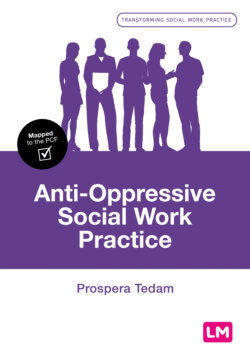Читать книгу Anti-Oppressive Social Work Practice - Prospera Tedam - Страница 61
На сайте Литреса книга снята с продажи.
Activity 3.1
ОглавлениеSchraer (2016) reported in Community Care about a social worker who was struck off by the Health and Care Professions Council (HCPC) for abusing his power by way of using threatening language to foster carers and coercing them to provide a positive review to his employers about his engagement with them. Go to the Community Care website and read the article ‘“Recommend me or you’ll never see your children again”: Social worker struck off for abuse of power’. The article is also accessible via this link: www.communitycare.co.uk/2016/02/03/recommend-youll-never-see-children-social-worker-struck-abuse-power/ (accessed 7 June 2020).
What are your thoughts about:
The behaviour of the social worker?
The action taken against the social worker?
The impact on the service user?
Social workers therefore need to have an understanding of what aspects of their role makes them feel powerless, because it is only when they feel empowered that they will be able to effectively assist service users. Braye and Preston-Shoot (2003, p114) concluded that if practitioners are not part of the solution, they must be part of the problem. Consequently, an understanding of where they are positioned within the power structure is an important first step to acknowledging what needs to be done in terms of working effectively on the one hand and maintaining loyalty and effective management on the other.
Foucault (1998, p93) suggests that power is everywhere, not because it embraces everything, but because it comes from everywhere. In this regard, Smith (2008a) argues that there are a number of ways in which power might be conceptualised. These are:
Representations of power.
Modes of power.
Sites of power.
